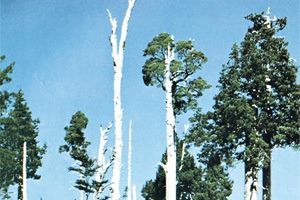Edge effect is the degree of contrast, density and variety of life that exists in the transition zone (border) between adjacent plant communities. It also involves an abrupt change in environmental conditions, like the type of soil, topography or microclimate conditions for example.
The larger the difference is between communities, the larger the wealth of species will be. An edge between a forest and a pastureland must house more species than an edge between a young and a mature forest.
These effects are more noticeable when they are a direct consequence of fragmentation, because when a habitat is intervened, the edges of the landscape increase. This is the influence a matrix has on the fragments and can be abiotic or biotic.
The first ones have to do with the transformations in the fragment’s microclimatic conditions, like changes in wind, solar radiation, etc. For example, prairies or grasslands receive more solar radiation during the day than at night, causing significant changes in ecological processes as well as in biological communities, because the area covered by the forest is reduced, and its organisms are exposed to conditions that are different from their normal ecosystem, and consequently to what has been defined as edge effect.
Biotic edge effects have to do with the reduction of species populations that cannot handle these microclimate changes. For example, the entry of exotic species from the matrix affects the native species by competing with them or eating them (such is the case of nest predation).








 Muere Evita
Muere Evita